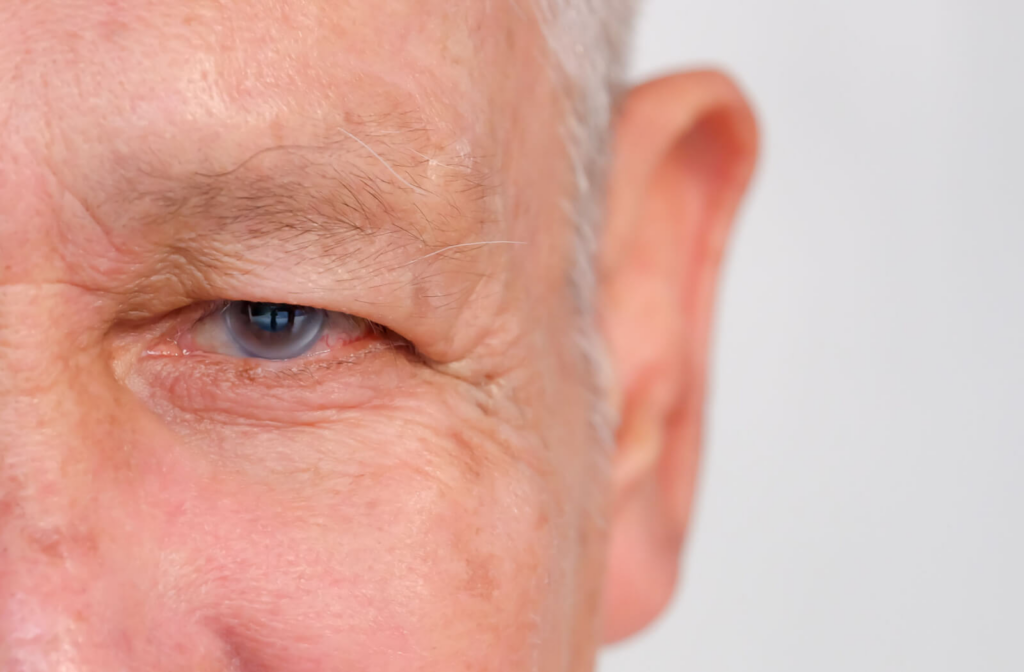An eye disease like glaucoma can affect anyone. Still, risk factors such as genetics and age can increase your chances of developing it. Plus, it typically presents with very few symptoms in the early stages—depending on which type develops.
This is one of the many reasons that it is so important to get regular comprehensive eye exams as recommended by your optometrist. During these exams, your eye doctor can screen you for glaucoma, in addition to other conditions or diseases that could negatively affect your vision or eye health.
What Is Glaucoma?
Glaucoma is not actually one disease; It’s a group of eye diseases that can cause permanent vision loss or blindness. Most types of glaucoma are related to an increase in eye pressure—also called intraocular pressure (IOP)—but not all. Normal-tension glaucoma, for example, can occur without an increase in eye pressure and cause damage to the optic nerve.
Many people do not notice the beginning stages of glaucoma. It does not usually cause discomfort and typically does not present with any symptoms in the early stages. A comprehensive eye exam that includes dilation is the best way to screen for glaucoma before it begins affecting vision.
Symptoms of Glaucoma
Unfortunately, once an individual notices symptoms of glaucoma, it is typically because some vision loss begins happening. Many people begin to notice vision changes in their peripheral (side) vision.
This is especially common in the peripheral vision closest to your nose. It is often subtle enough that some people still will not actually realize they are losing vision. These subtle changes are temporary and can eventually cause blindness if your eye doctor does not start treatment.
Glaucoma & Genetics
Anyone can develop glaucoma, but like any other disease or condition, certain things can make us more susceptible to developing it. 3 common risk factors associated with glaucoma are age, genetics, and ancestry.
Adults over 60 generally have an increased risk of glaucoma. Additionally, a person’s racial heritage can affect their chances of developing this condition at any age.
A question that often comes up is whether family history plays a role in a person’s risk of glaucoma. You may be at a higher risk if you have close family members with glaucoma. A recent study using advanced genome-sequencing technology led researchers to discover a genetic mutation that increased the chances of pediatric glaucoma.
This breakthrough may lead to improved screening for glaucoma in children to increase the chances of early diagnosis and treatment to prevent vision loss.
Increased Risk & Dilated Eye Exams
If you are at an increased risk of glaucoma, you may be wondering: What can you do about it? Comprehensive eye exams that include dilation are the first step. Dilation is not an automatic part of every eye exam. Your eye doctor will likely recommend a dilated eye exam every 1 to 2 years if you have any risk factors, depending on your particular situation.
Types of Glaucoma
The 2 most common types of glaucoma are open-angle and angle-closure glaucoma. It’s worth noting that there are at least 8 other types of glaucoma that could affect an individual, such as pediatric glaucoma, normal-tension glaucoma, or secondary glaucoma.
Open-Angle Glaucoma
Open-angle glaucoma is the more common of these 2 types. It is primarily caused by a buildup of fluid behind the eye. This buildup increases your IOP until it begins damaging the optic nerve. Fortunately, open-angle glaucoma typically responds well to treatment when it is detected early.
Medicated eye drops to reduce eye pressure, help drainage, or decrease fluid creation are all common treatments in the first line of defence. Minimally invasive glaucoma surgery or laser treatment may also be options if eye drops are ineffective.
Angle-Closure Glaucoma
Angle-closure glaucoma, also known as acute or narrow-angle glaucoma, is a less common but more serious form of the condition. One of the primary characteristics of this type of glaucoma is that the drainage channels in the eye become completely plugged.
This can happen when the space or “angle” between the iris and the drainage system for the eye is not as wide as it should be. And when the pupil expands too much or too quickly, like when you enter a dark room, the iris causes the drainage channels to close by bunching up against them.
Symptoms typically progress quickly with this form of glaucoma, and treatment should be started as soon as possible to prevent vision loss. Laser treatment or surgery are usually the first choices of treatment in these cases.

Discuss Glaucoma with Your Eye Doctor
Anything that can cause vision loss can be a scary thought—we only have 2 eyes, after all—but taking care of your eye health with regular visits to your eye doctor and following their recommendations is one of the best things you can do! According to the Canadian Association of Optometrists, most people should see the eye doctor for an exam every 1 to 2 years.
It is important to discuss this frequency with your eye doctor as they can take your personal situation into account when making a recommendation. If you are due for your next exam, or you are experiencing any troubling symptoms, give us a call at Chestermere Optometry. Our experienced team can discuss your concerns and get you in to see one of our optometrists.




